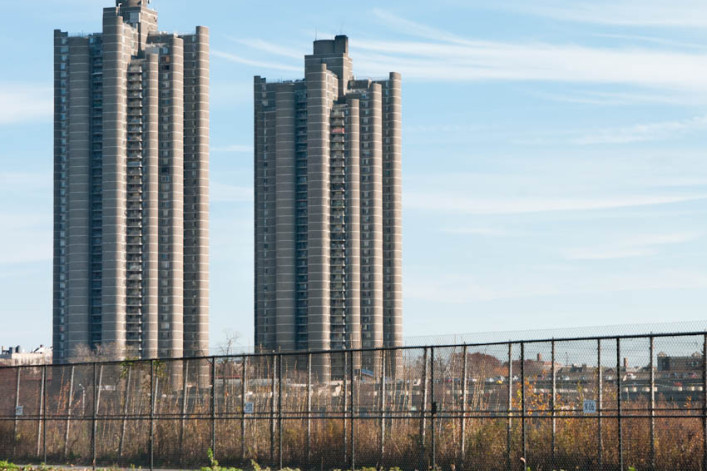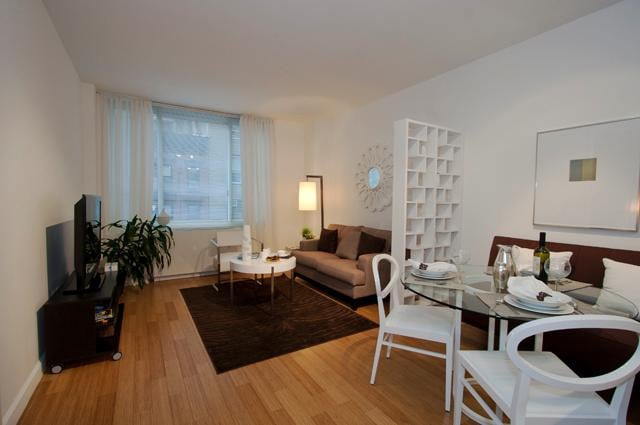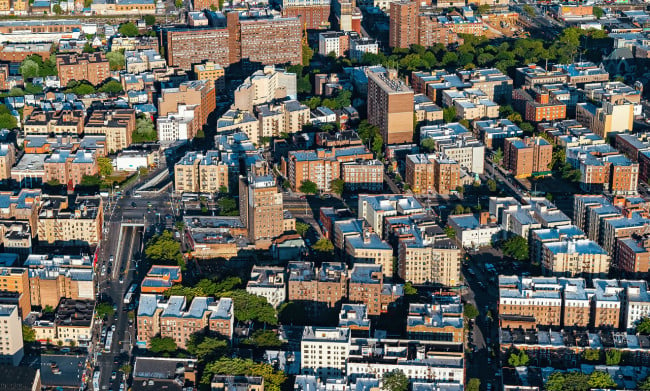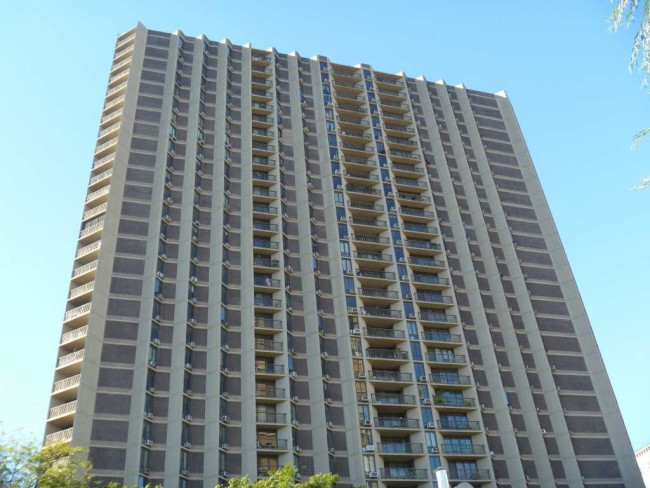How can middle-income New Yorkers find affordable housing?

Tracey Towers in the Bronx is an affordable housing option for middle-income New Yorkers. The waitlist is long.
Dan DeLuca/Flickr
New York City real estate often feels like it caters only to the mega-rich—those who can afford any rental, co-op or condo they can dream of—or those with very low incomes, who can access "affordable" housing subsidized by the government. But for those of us who fall somewhere in the middle, things are trickier.
My fiancé and I make a combined income of less than $100,000; we don't qualify for affordable housing because we make too much money, and considering the fact that we're both freelancers with less-than-regular salaries, the market-rate route isn't for us either.
And we know we're not alone. According to a 2015 Citizens Budget Commission policy brief, over 150,000 middle-income people in New York City are having a hard time paying for necessities like rent and other basic needs, such as child care and groceries. (The U.S. Department of Housing and Urban Development puts the area median income in the NYC region at $85,900 for a family of three.)
The solution for those like us may lie in playing the lottery... the affordable housing lottery to be exact.
What is "affordable housing" and is there any for middle income NYC residents?
“Affordable Housing” is a relative term. But according to the HPD (Department of Preservation and Development), that term means that housing costs are not larger than 30 percent of a person’s income. Local government determines what’s "affordable" by something called the Area Median Income, or AMI, which shift by neighborhood.
Government subsidized housing options vary based on how much you make relative to your AMI. Usually the less you make, the more subsidized housing options are available.
Since Mayor Bill de Blasio took office in 2014 the availability of housing for middle-income families has decreased exponentially. Just recently, and quite stealthily, the mayor adjusted his housing plan to cut the number of available units formerly put aside for middle income housing, and raise the amount of units set aside for lower income housing. According to Politico, on July 25, 2017 "New Yorkers who fall into the middle income range (which is approximately between $69,000 to $141,735 a year), are now slated to get 39,000 subsidized homes, compared to 44,000 in the initial plan. The bulk of the homes will be rented to those classified as low income, which marks a 5,000-unit decrease from the earlier target.”
For those looking for these few-and-far-between middle-income rentals, NYC Housing Connect is the online portal where you'll find new postings, and through which you can apply. (Note: We here at Brick Underground also frequently post when new affordable housing units start accepting lottery applications).
Some buildings you'll find on Housing Connect are only applicable to low income New Yorkers, earning 30 percent the Area Median Income. Other buildings on the site consider applicants who make as much as 165 percent of the AMI, who would fall more within the middle-class range, but those are much more rare.
Of the 10 subsidized buildings across Manhattan, the Bronx, Queens and Brooklyn that are currently accepting applications via Housing Connect, one in St. Albans, Queens has the highest income cap. There, a family of four could make up to $95,400 and still qualify for a two-bedroom for just over $1,500 a month
But most of the buildings currently accepting applications have income caps below $70,000. Note: Income limits depend on your family-size. (As an example, a family of four looking to apply to a new building in East Harlem that's currently accepting applications, has to make between $42,549 and $57,240—which is way under the middle-income threshold—and a two-person household can only make a combined income between $42,549 and $45,840.)
Other sites to check out are the New York City Housing Development Corporation's Middle-Income-Rentals, which shows you what's available in all five boroughs for mid-range apartments specifically, and Mitchell-Lama Connect, which shows you where wait lists stand in the city's Mitchell-Lama buildings (note: these are both sales and rentals).
Playing to Win?
If you want to win the lottery, you gotta play. But winning the housing lottery when you're middle income isn't as simple as buying a ticket and hoping for the right numbers to come up.
To get started, you have to fill out financial and personal information about yourself and anyone you're planning to share your apartment with. Make sure it’s all truthful, because if you do get selected, an even more extensive application process is ahead of you and it’s all based on your original information on this site. If your original information isn’t honest and doesn’t jibe with the secondary information, you will get disqualified.
If you do get chosen via random lottery selection, make sure to get—and stay—organized. The paperwork involved is akin to buying a house, so it’s a good idea to get those financial records ready to go: tax returns from the past two years, pay stubs, W2s and 1099s, as well as your current lease and employment verification letters. Also don’t double submit—if you submit online and via snail mail you can be disqualified. (For a strategic guide to navigating the "80/20" affordable housing lottery, see Brick Underground's 7 steps for applying to the NYC affordable housing lottery.)
While the odds may seem stacked against you, sometimes it works out. My fiance and I just handed in our paperwork for a Stuyvesant Town one-bedroom, under market rate. I applied via NYC Housing Connect in May and we heard back after July 9th.
We were just lucky—it is just luck of the draw after all—and it still doesn’t mean we'll get approved.
We are handing in our final paperwork today, but assuming that our financials are up to snuff and they have an apartment suitable for our needs–we could very well be offered a two-year lease for a large one-bedroom in this East Village-area complex for $2,860.00. Sure, it's not cheap, but for a city— and a neighborhood— where prices are constantly creeping up, it may be our very best bet.


























